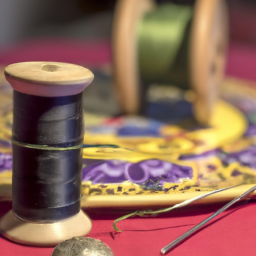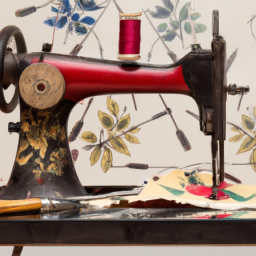
History of Sewing

Sewing, the art of using a needle and thread to join pieces of fabric together, has a rich and fascinating history that dates back thousands of years. From its humble beginnings to the advanced technology we see today, sewing has played an instrumental role in shaping culture, fashion, and society as a whole.
The Ancient Origins
The origins of sewing can be traced back to prehistoric times. The earliest known form of sewing occurred during the Paleolithic Era, where bone needles were used by early humans to stitch together animal hides to create functional garments.
As civilization progressed, the use of natural materials, such as plant fibers and animal sinew, became more common in the sewing process. The development of more refined tools, such as the invention of the eyeless needle, made sewing more convenient and efficient.
Invention of the Sewing Machine
A significant milestone in sewing history was the invention of the first working sewing machine. In 1790, English inventor Thomas Saint created a machine capable of stitching straight seams using a chain stitch. However, it wasn’t until 1830 when French inventor Barthélemy Thimonnier patented the first practical sewing machine.
Throughout the 19th century, several advancements were made in sewing machine technology. Isaac Singer, an American businessman, introduced the first commercially successful sewing machine model in 1851, featuring a foot pedal for hands-free operation. This innovation revolutionized the textile industry, leading to increased productivity and the ability to create intricate designs more efficiently.
Sewing and Fashion
Sewing has played an integral role in the world of fashion. In ancient times, garments were primarily sewn by hand, emphasizing craftsmanship and individuality. During the industrial revolution, the introduction of sewing machines allowed for mass production, making fashion more accessible to the masses.
Sewing skills were highly valued, and home sewing became a popular pastime for women. Sewing patterns and fashion magazines became widely available, enabling individuals to create their garments and stay up to date with the latest trends.
Sewing Today
In modern times, sewing continues to be a popular hobby, creative outlet, and essential skill. While industrial sewing machines have become more sophisticated and computerized, traditional sewing methods and handcrafted garments still hold a special place in the world of fashion.
Furthermore, the rise of sustainable fashion and a desire for unique, personalized clothing has fueled a resurgence in the popularity of sewing. Many individuals are rediscovering the art of sewing, whether it’s through upcycling old garments, creating custom pieces, or simply enjoying the therapeutic process of hand-stitching.
In Conclusion
The history of sewing is a testament to human ingenuity and creativity. From its humble beginnings with bone needles to the invention of the sewing machine and its impact on fashion, sewing has continually evolved throughout the ages. Today, sewing remains a timeless craft that brings joy, self-expression, and a sense of accomplishment to individuals all over the world.




